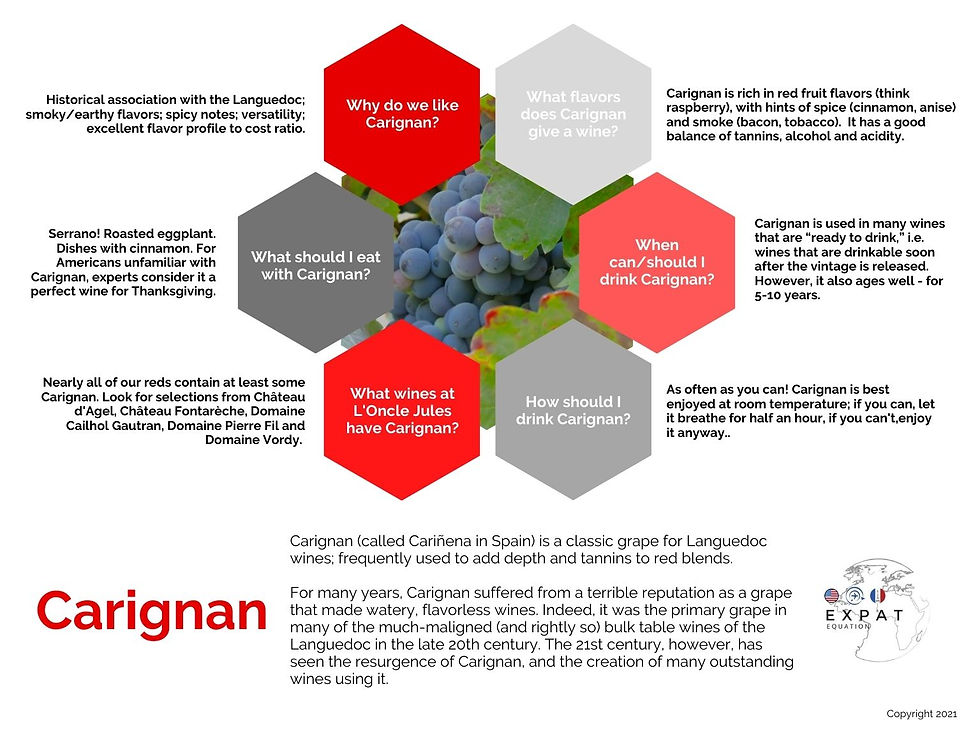It’s 38 degrees, is that enough to kill Salmonella?
- Richard Carden

- Aug 29, 2019
- 4 min read
Four days down and its time to celebrate a little. Tonight is the final night for the summer of JeuDivin - a pop up vigneron experience in Nîmes that takes place right around the corner from my apartment. It goes until midnight so I’m grabbing an early dinner (8 pm) and then hanging out there trying more Costières de Nîmes wines.
Today qualifies as warm and sticky. We took an afternoon coffee break, and as I was about to head out onto the terrasse to enjoy my coffee, one of the other students said “Oh no, you don’t want to do that, its 38 degrees out there.” If there’s one thing that has become abundantly clear this week, it’s that I have to learn far more than one foreign language to live here. Obviously, there is French. Luckily, I have finally gotten to the point where, even though there is often a visible delay in my comprehension, I don’t actually go through a translation process. I probably do look like Forrest Gump as the words register, though. “Maman disait toujours que la vie et comme une boîte des bonbons.” (That’s Momma always said life is like a box of chocolates” for you non-French-speaking américains, or at least the ones who aren’t yet heavily relying on Google translate...) But, in addition to French, I also have to learn metric without actively doing conversions. And I am actually finally getting there with temperature. So, when he said it was 38, I knew that meant hot. Like 100 degrees Fahrenheit hot. And it was. But every time I think about the days last winter where it was -50 Fahrenheit (that’s -45 C for my European friends), I can take 38. I still actively do conversions for distances and liquid measures, and I am fairly hopeless with weights, except that I know 1 kg is 2.2 lbs. But that never seems to make it easy for me to remember that 1 oz is roughly 28 grams. As if all that weren’t enough, I also have to learn the language of French restaurateurs and all the organizations that regulate them. And it includes a host of acronyms, any of whom are likely to show up and inspect you at any time, as well as a giant list of terms I either never knew or for which I was taught alternative meanings.
What else have I learned since we last spoke? Well, I have learned that purchasing a bar in France coud wind up having an unintended and highly unfortunate consequence. Specifically, it could threaten my love for French cuisine! Mais non, you say. C’est impossible. And I normally would have agreed with you. But we spent the morning going through a comprehensive list of bacterial ailments and parasitic infections and their prevalence, most of it right before lunch. We then actively analyzed the risks present with our dishes. Two of the guys had beef tartare, which I had eaten on Tuesday. “Oh my god, there is a raw egg. I wonder if they washed their hands after handling it and cleaned the utensils that touched it? Do they have the required listings of the origin of the beef and where it was raised and slaughtered? Has the beef been maintained at an appropriate temperature prior to service?” Two of us had blanquette of veal. Similar questions about the provenance of the veal, along with questions about whether the vegetables had been properly washed before cooking. The teacher then had tiramisu for dessert. “What about the custard there? How was it made? Eggs? Storage? Were any of them cracked? Cream? And what about allergens for the entire meal? And, by the way, don’t you know that only 4% of restaurants that are actually inspected are found to be fully conforming? And what about the dog wandering around?” So it was with no small degree of fear that I approached dinner. But as I sit here with an aioli of cod and mussels, preceded by a peach salad with Serrano ham, I can tell you I am not the least bit bothered. Major crisis averted. Although I did wonder if they properly followed the fiche technique for the aioli...


A couple of my friends will get a particular kick out of this note. There are 14 allergens of particular concern here, which include celery (!!!!! Never knew this existed) and lupin flour (a flour made out of legumes). But they do not include a couple from which my friends suffer. So I said to the teacher “In the U.S., there are more and more people with allergies to onions and garlic. Is that not a problem here.” And predictably, one of the other students got a look of mixed terror and indignation on his face, and said “Really? Garlic? But life is not life without garlic.” This is a sentiment with which I strongly identify, and I could not feel worse for my friends who cannot enjoy one of the world’s top ingredients (after bacon and pork fat, and maybe foie gras). But they handle it with incredible grace, and without slapping all the rest of us every time they have to eat with us.
I truly appreciate everyone’s (on both sides of the ocean) encouragement this week. Two more sessions tomorrow and I am done. And I think both the teacher and I are fairly sure passing will not be a problem. So, its time for a little soupe froide (cold soup) avec cérises (cherries) and then a couple of glasses of Costières de Nîmes wine and off to bed. Bonne nuit a tous.


























Comments